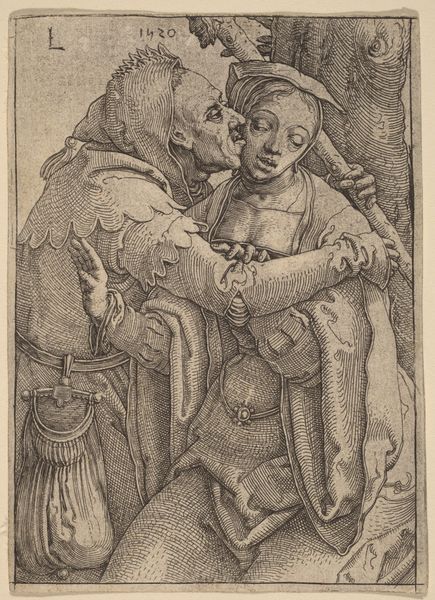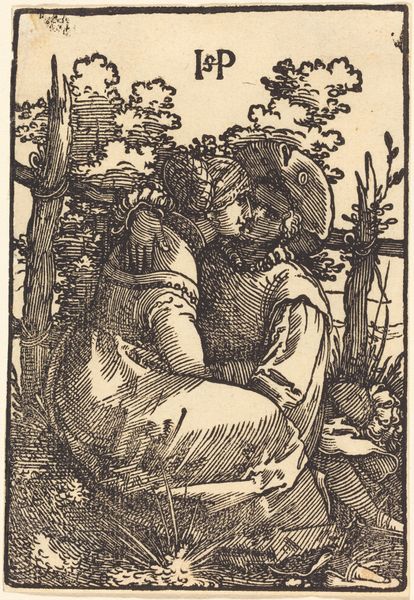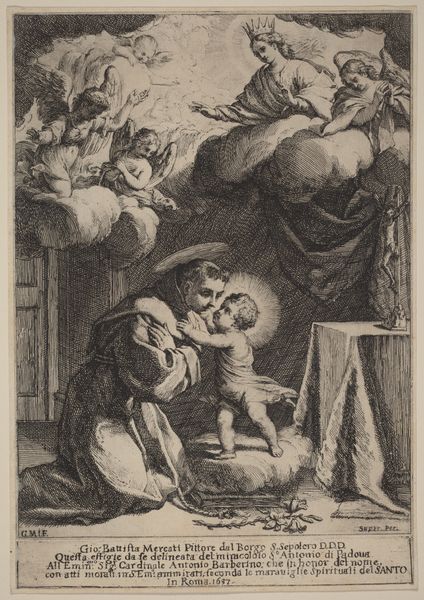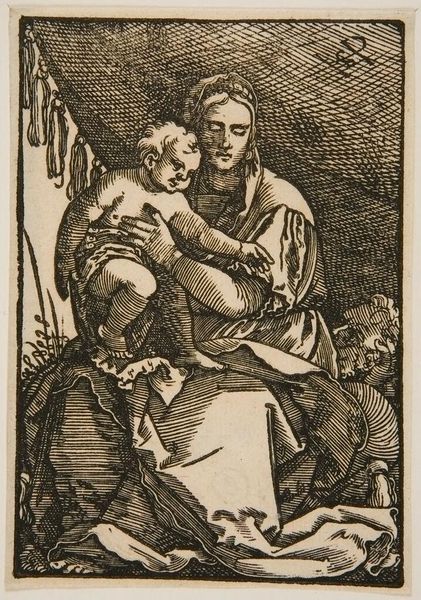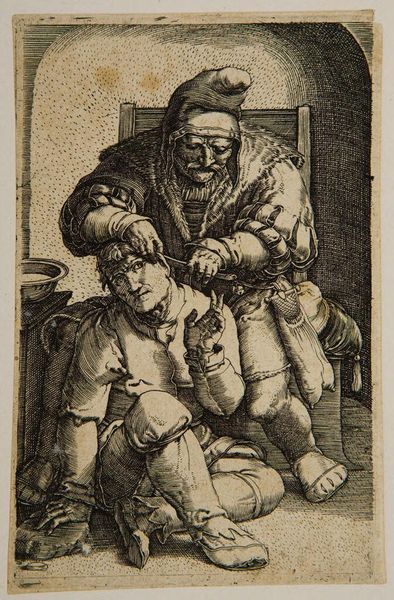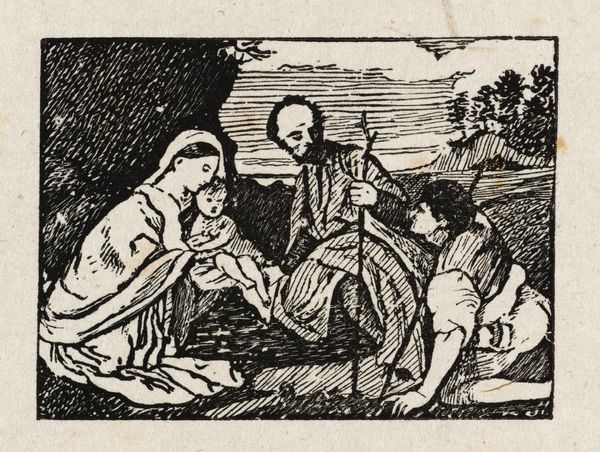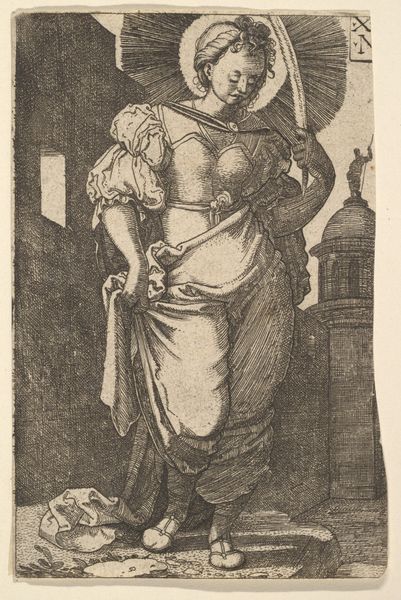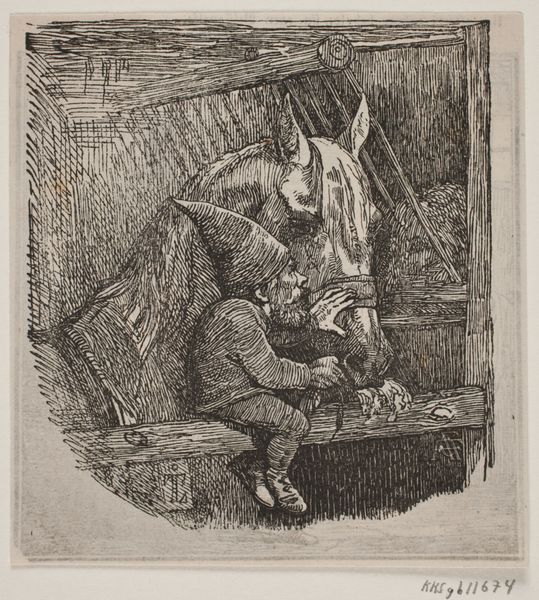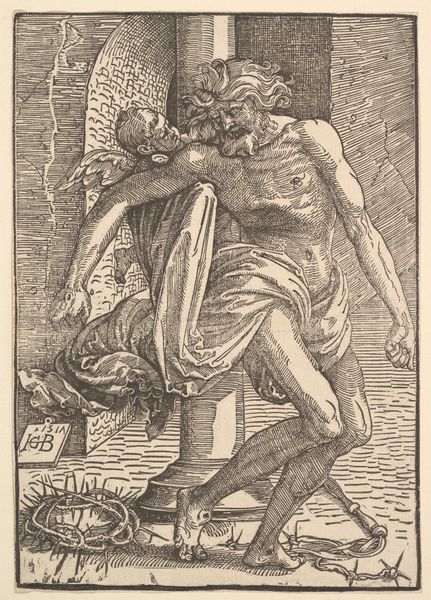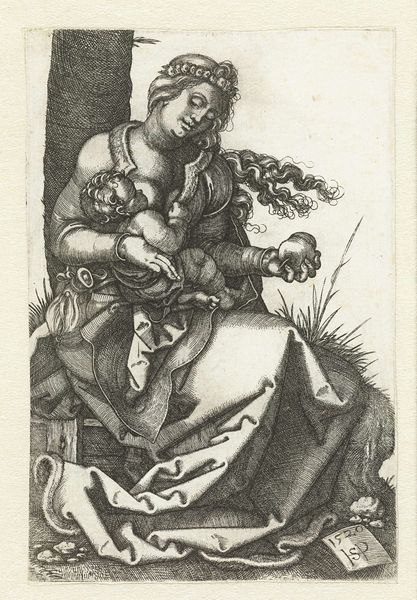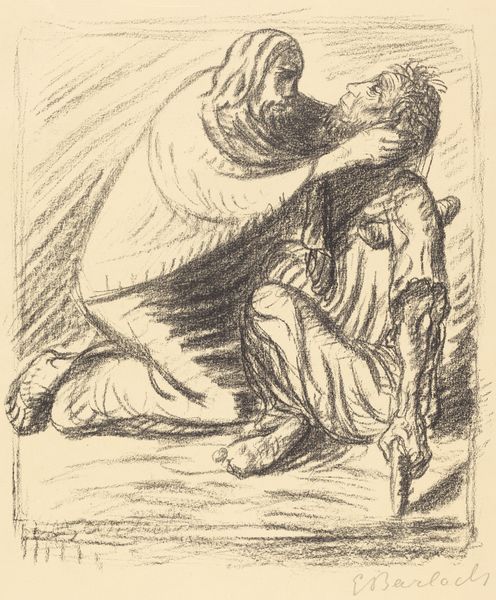
drawing, print, paper, engraving
#
portrait
#
drawing
# print
#
caricature
#
figuration
#
paper
#
11_renaissance
#
line
#
history-painting
#
italian-renaissance
#
engraving
Dimensions: 124 × 85 mm (image/block); 128 × 90 mm (sheet)
Copyright: Public Domain
Editor: Here we have Sebald Beham's "The Holy Family Under the Canopy," an engraving of undetermined date, rendered on paper. What strikes me most is the density of lines used to create form; how can we look past the image itself and into its production? Curator: Exactly. Let's consider the context. This print wasn’t just an aesthetic object; it was a commodity. The material reality is that engravings like this circulated widely, reproduced and consumed within a burgeoning market. Beham was not merely an artist, but an artisan participating in a complex network of production and distribution. Who was buying these, and what was their purpose? Editor: So, beyond the religious iconography, we should consider the socio-economic impact of this kind of reproducible image? What was the relationship between the artist and the artisan, the "high art" and "low craft," that are embodied here? Curator: Precisely! How did the labour of creating the printing plate, the materials used – the metal, the paper, the ink – influence the accessibility and reception of religious imagery? The meticulous details weren't just for aesthetics. They impacted production time, cost, and, ultimately, who could afford to own a piece of the divine. Can we really divorce the image from the practical business of its making? Editor: It definitely shifts my understanding. The act of engraving transforms something seemingly ethereal into a tangible object for the masses, blurring the lines between the sacred and the secular. Curator: Absolutely. And perhaps that accessibility, that commodification, played a significant role in shaping religious thought and piety during the Renaissance. Editor: I hadn't considered the production of this image as influencing religious beliefs! Curator: This piece really reveals that the making and meaning of art are really interwoven. Editor: I agree; analyzing the means of production really offers new insights.
Comments
No comments
Be the first to comment and join the conversation on the ultimate creative platform.
